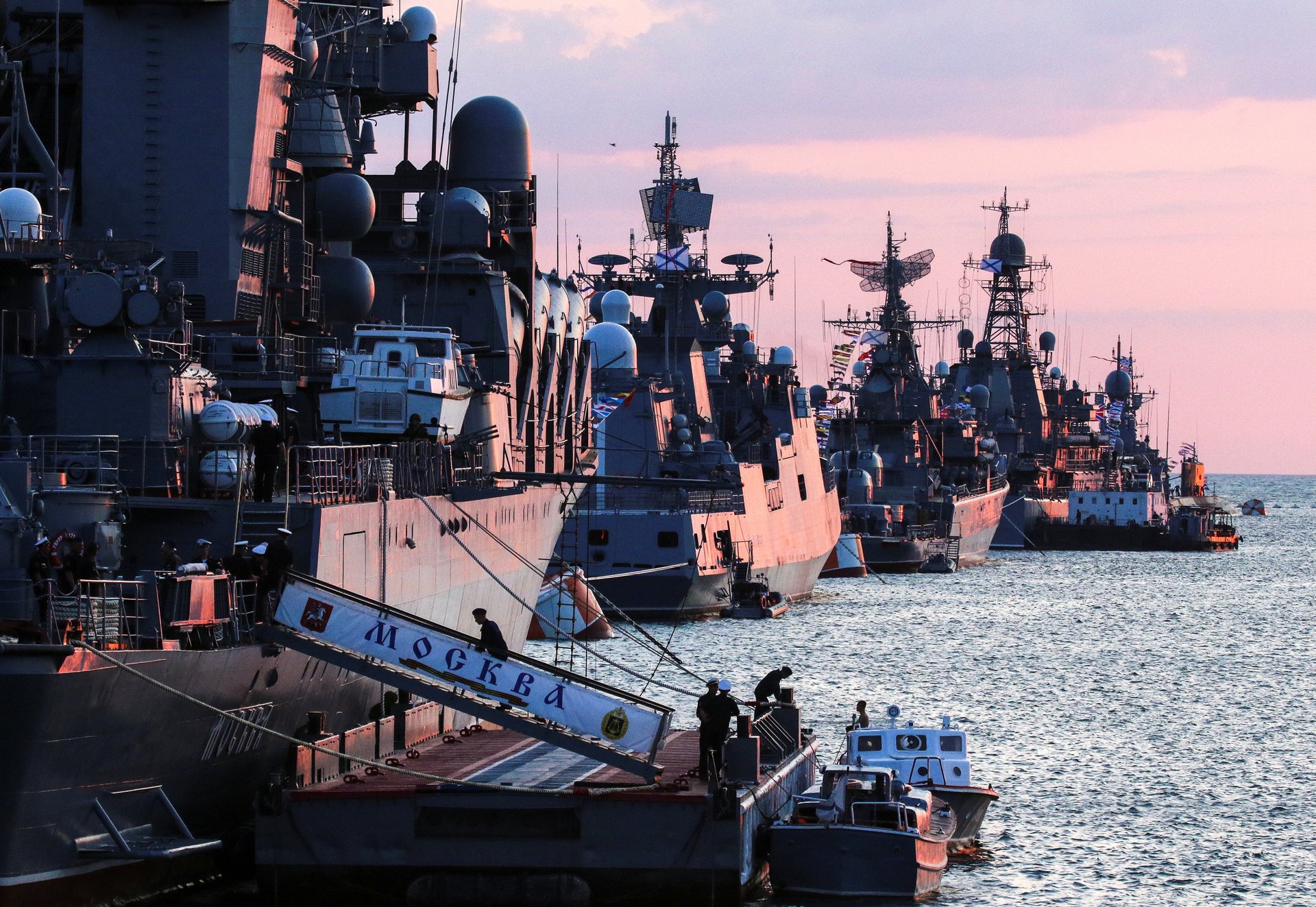Russia is apparently conscripting dolphins in its war against Ukraine
According to the UK military, the marine mammal fighting force is a bulwark against combat divers in Mariupol

Russia has increased the number of dolphins guarding the Sevastopol naval base on the Black Sea in occupied Ukrainian territory, according to the UK Ministry of Defense.
Suggested Reading
The Russian navy has trained the marine animals to counter potential enemy divers sent on solo missions by the Ukrainian military to attack the naval base. A report by Naval News estimated there were between 6 and 7 dolphins being held in underwater pens floating off the base.
The concern is that Ukraine would send individual underwater special forces to tamper with, infiltrate, or attack the Russian military base, a type of small-scale guerrilla warfare the Ukrainian military has allegedly employed in the past.
If an enemy swimmer was detected, the dolphins would presumably be released in an attempt to counter any progress. For comparison, Micheal Phelps—the most decorated Olympic swimmer of all time—has reached a top speed of 6 mph, while Dolphins can swim as fast as 20 mph.
The report comes just a month after a beluga whale wearing a Russian-labeled camera harness was found off the coast of Sweden, fueling speculation that the country was using the marine species to spy on underwater areas of interest.
In recent weeks, the Russian military has faced renewed criticism from Yevgeny Prigozhin—the head of the private mercenary Wagner Group fighting for the Russian in Bakhmut—who has increasingly criticized the Russian war effort, blaming poor strategy and apathy from Russian military leaders for mounting casualties. On Friday (June 23), Prigozhin posted a video accusing the Russian Ministry of Defense of lying about NATO aggression as a justification for war.
The US has also used dolphins in the military
Russia is not the only country to conscript dolphins into its forces. The US Navy began the Marine Mammal Program in 1960, where it trained dolphins, beluga whales, and sea lions to perform tasks underwater such as retrieving lost objects, guarding submarines, and doing underwater surveillance.
According to Frontline, the US program was using as many as 100 dolphins by the 1980s, with a budget of over $8 million. The Soviet Union’s military was allegedly doing the same in hopes of countering any underwater American military progress. The venture was declassified in 1992, just months after the fall of the Soviet Union.
Dolphins are extremely intelligent creatures and in the past have been trained to locate and tag underwater explosives and divers. Sea lions have also been successfully trained to attach a recovery line to underwater mines, which human handlers can then fish out.
Related stories:
Top Scandinavian companies are boycotting the maker of Oreo and Toblerone for its business in Russia